Have you ever seen a field of thousands of bright yellow pumpkins ready to harvest? After seeing such results, it is only natural to wonder how many pumpkins you can grow per plant?
The short answer is that a single pumpkin plant can produce between two and five pumpkins. However, the exact number is determined by several factors, including pumpkin species, soil type, and other environmental factors, such as temperature.
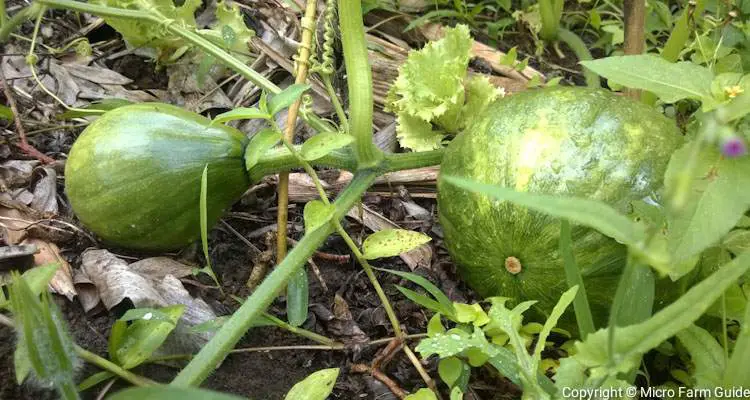
For instance, miniature pumpkin varieties, such as Wee-B-Little, can produce as many as nine pumpkins per plant, which is reasonable, considering their size.
In contrast, you can expect one plant to yield one pumpkin from a massive variety, such as PrizeWinner Pumpkin, if grown in the right conditions.
Despite this, it requires much more resources, including water and highly fertile soil, to grow to its full potential.
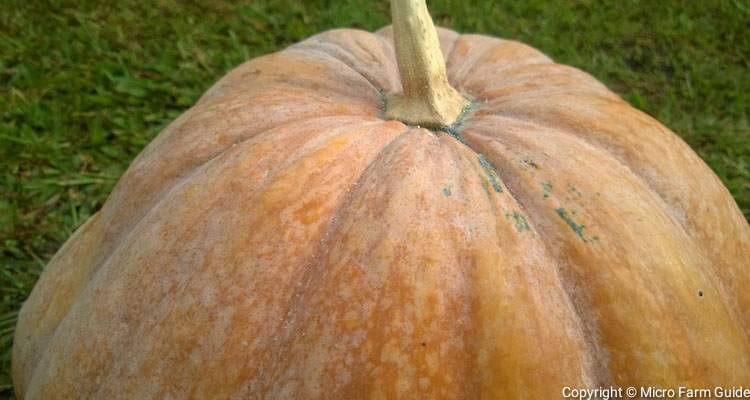
Regardless of their size, you must ensure your pumpkin plants are irrigated with plenty of water, especially during the heat of the dry summer.
With all this in mind, this article will explore everything you need to know about how many pumpkins you can achieve per plant and some tips to get the most out of your vines.
How Many Pumpkins Should You Target Per Plant?
Your harvesting goals will ultimately decide your ideal target per plant.
For example, suppose you’re looking to grow giant pumpkins like Mammoth Gold. In that case, you’ll need to dedicate your resources to one pumpkin rather than a dozen.
This is also the case with Happy Jack Pumpkins, from which you’ll possibly achieve 2 relatively large pumpkins per plant.
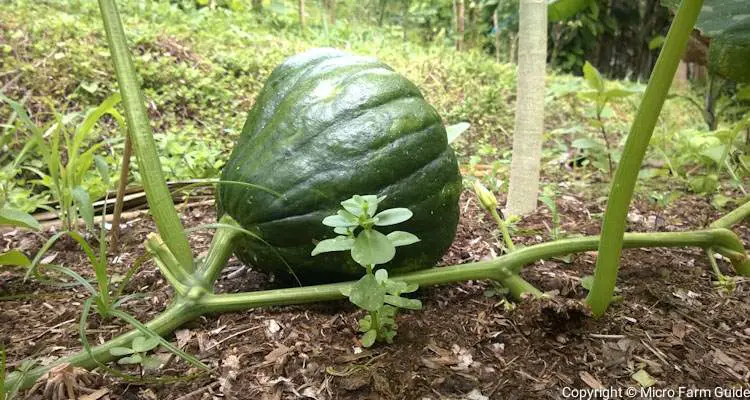
Generally, most pumpkin varieties should aim for about 3 pumpkins per plant, since 4 would be considered a crowd.
With this in mind, here is a list of some popular pumpkin varieties and their average yields per plant.
| Pumpkin Cultivar | Avg. Size (Diameter) | Average Yield Per Plant |
| Baby Boo | 3″ | 8 to 12 |
| Jack O’Lantern | 3″ | 3 to 5 |
| Munchkin | 3.5″ | 8 to 12 |
| Hooligan | 3.5″ | 15 to 18 |
| Sweetie Pie | 3″ | 12 to 15 |
| Jack Be Little | 4″ | 6 to 10 |
| Jackpot | 13″ | 2 to 5 |
| Autumn Gold | 9″ | 3 to 5 |
| Gladiator | 13″ | 2 to 3 |
| Big Max | 20″ | 1 to 2 |
| Dill Atlantic Giant | 40″ | 1 to 2 |
| PrizeWinner | 30″ | 1 to 2 |
| Blanco | 8″ | 1 to 2 |
Regarding production limitations, the most significant factor is usually the vines. The more pumpkins a plant produces, the wilder the vines become. Eventually resulting in overcrowding.
As a result, the rest of your pumpkin becomes starved of necessary resources and dies. Remember, these vines need appropriate space to spread while receiving sufficient light and oxygen.
How Much Space Does A Pumpkin Plant Need?
Regardless of the variety of pumpkins, you will need to provide them with enough space to grow properly. This can be on the ground or vertically on trellises.
For instance, larger pumpkin varieties can produce over 100 feet long vines. These can easily cover an area of 200 square feet if left unchecked.
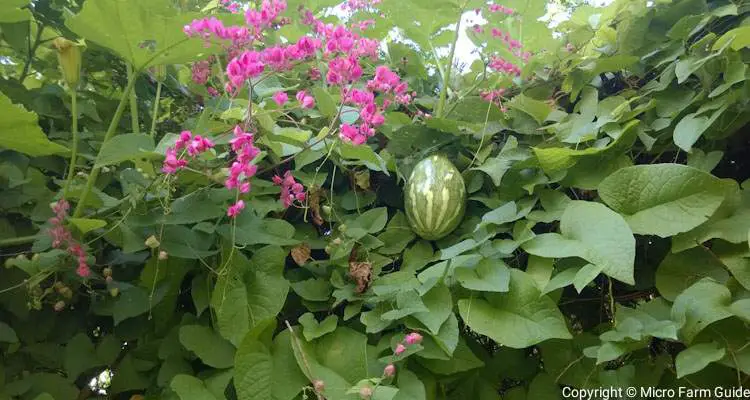
On the other hand, compact, medium-sized pumpkins, such as Autumn Gold and Jackpot, require at least 20 square feet of space for the best results.
Note: Miniature pumpkins also require about 20 square feet. However, these plants can also be trained to grow on trellises. This uses vertical spacing while serving as a great conversation starter.
The Importance Of Row Spacing
Row spacing is an essential factor in conventional pumpkin production, with most gardening communities believing that adequate row spacing and high yield are directly linked. Yet, this isn’t always the case.
In fact, there isn’t any one-size-fits-all approach to guarantee extraordinary results. Several practices disregard rows altogether but ensure adequate spacing.
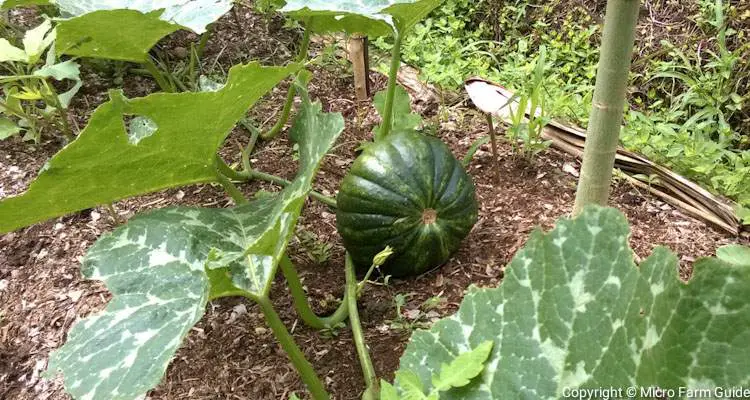
You will have to engage in a lot of trial and error to achieve the results you’re aiming for. There isn’t any surefire formula that you can apply.
Note: The key is continually learning from your mistakes while working towards your goal, whether this is a perfect harvest or even one singular plant!
Further Fine Tuning Pumpkin Spacing
Traditionally, planting between three to five pumpkin seeds per hill was recommended, spacing them approximately four to six feet apart.
However, in light of the success of Agroforestry Systems such as Syntropic Farming, conventional row farming is gradually being viewed as obsolete.
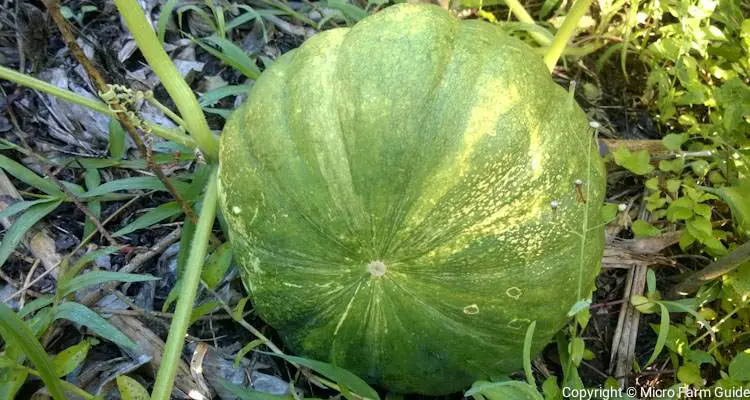
Alternatively, the practice of growing pumpkins in the understory of a Food Forest is becoming more popular due to its multi-function approach to resource management.
Generally, normal-sized pumpkins will require a minimum of 12 inches of room between each row. While miniature and small pumpkins need five inches of space between one another.
However, these smaller varieties can fit into any space in an agroforestry system.
Larger varieties can be planted in small patches throughout the Food Forest and allowed to run freely, resulting in a lower chance of competing for resources.
This lessens the chances of the vines choking each other and allows them to help control weeds within the system, thereby promoting healthy growth and production.
Final Thoughts
Understanding how many pumpkins can be grown from one plant is essential when choosing varieties and planning for your needs.
The plants might require more or fewer resources than similarly sized pumpkin patches, depending on the expected yield.
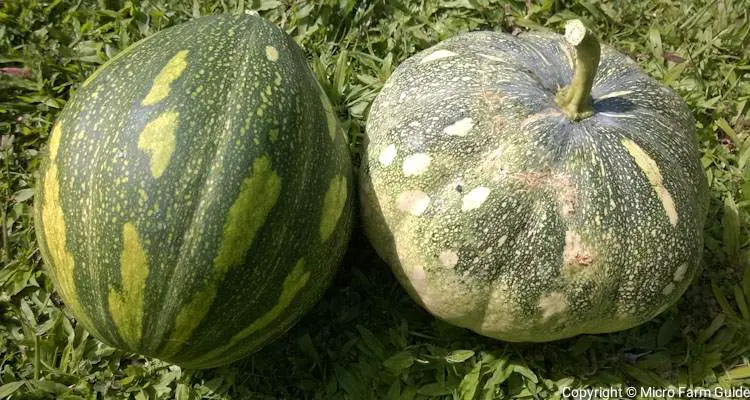
Hopefully, this guide has helped you understand some of the things you’ll have to consider to determine how many pumpkins you can expect to get from each plant.
References
Penn State University Extension. Pumpkin Production. extension.psu.edu. Accessed October 2022
University Of Georgia Extension.Commercial Production and Management of Pumpkins and Gourds. extension.uga.edu. Accessed October 2022

